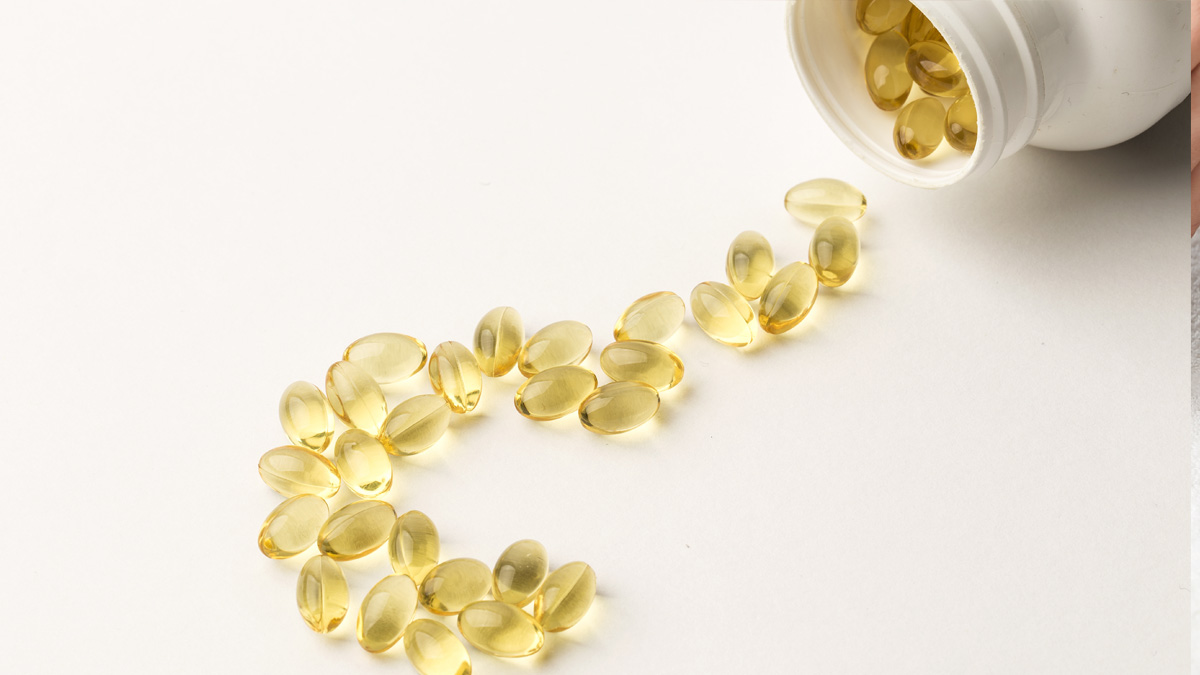
There are two forms of vitamin D in the body – D2 and D3: their empirical chemical formulae differ by a single carbon atom. We get them from different sources: D2 is found primarily in plant-based foods, while D3 is obtained from animal-origin foods, and is also produced when our skin is exposed to the sun’s rays.
What are vitamin D3’s characteristics?
Vitamin D3, or cholecalciferol, is synthesised from a sterol (complex lipid) called 7-dehydrocholesterol, naturally present in the body. When this sterol is exposed to the sun’s UVB rays, it is converted into vitamin D. Most of the vitamin D circulating in the body is produced in this way (1). That’s why we’re advised to expose our skin as much as possible to natural light. Vitamin D3 is also obtained from the diet, in particular from oily fish and egg yolk.
What are vitamin D2’s characteristics?
Vitamin D2, or ergocalciferol, is a derivative of ergosterol, a sterol naturally present in the cell membranes of certain plants and fungi. Vitamin D2 is obtained by exposing ergosterol to the sun’s UVB rays. It is found in mushrooms (especially those exposed to UVB rays) as well as in vitamin D-fortified foods like margarine.
Which form of vitamin D should I choose?
Vitamins D2 and D3 are both metabolised in the liver into calcifediol and then converted in the kidneys into calcitriol, the active and usable form of vitamin D (2). However, research has shown that vitamin D3 increases the level of calcitriol in the body to a greater degree (3). It is also less sensitive to heat and humidity than D2 and thus more stable (4).
As a consequence, if you wish to take a vitamin D supplement, vitamin D3 is the better choice. You have three options to choose from:
- Vitamin D3 5000 IU, with its high 5000 IU dose, is aimed more at those with a known deficiency or higher risk.
- Vitamin D3 Spray, a more convenient form, is recommended for those with a sensitive stomach.
- Vitamin D3 1000 IU, with its 1000 IU dose, is suitable for everyone.
References
- Thomas Ernandez, Catherine Stoermann-Chopard : Vitamine D et insuffisance rénale chronique : regain d’intérêt pour une vitamine oubliée. Rev Med Suisse. 2012, Vol. 8, pp 2140-2145.
- Laura Tripkovic, Helen Lambert, Kathryn Hart, Colin P Smith, Giselda Bucca, Simon Penson, Gemma Chope, Elina Hyppönen, Jacqueline Berry, Reinhold Vieth, and Susan Lanham-New : Comparison of vitamin D2 and vitamin D3 supplementation in raising serum 25-hydroxyvitamin D status: a systematic review and meta-analysis. Am J Clin Nutr. 2012, Vol. 95(6), pp 1357–1364.
- Glendenning P, Chew GT, Inderjeeth CA, Taranto M, Fraser WD : Calculated free and bioavailable vitamin D metabolite concentrations in vitamin D-deficient hip fracture patients after supplementation with cholecalciferol and ergocalciferol. Bone. 2013, Vol. 56(2), pp 271-5.
- Lisa A Houghton, Reinhold Vieth : The case against ergocalciferol (vitamin D2) as a vitamin supplement. Am J Clin Nutr. 2006, Vol. 84(4), pp 694–697.
3 Days
Great service
Great service items dispatched straight away and arrived on time
M***** G***
6 Days
A good webshop for supplements
A good webshop for supplements, it has a large selection of them and considering the quality, the pricing offers good value for money. The ordering process is easy and the products are sent straight away.
Maurice
8 Days
Great quality
Products are of great quality and fast delivered.
Fred Laan
9 Days
SuperSmart destaca por la calidad de…
SuperSmart destaca por la calidad de sus productos.
GONZALEZ PALACIN Luis
10 Days
snelle levering,perfect product.
snelle levering,perfect product.
robert
10 Days
Been a customer for over 15 years and…
Been a customer for over 15 years and find their products along with the service excellent. I recommend Super Smart to all my friends.
Del Chandler
11 Days
Excellent product and service
The product was excellent and so were the delivery and the service
F. Ferlitz
13 Days
Never an issue ordering
Never an issue ordering. Simple and to the point. And product always comes the following day. Quality is great too!
Andrea
14 Days
Excellente service & products with rare…
Excellente service & products with rare revelation supplements I love ❤️
Giovanna Escalera
15 Days
Fast shipping
Fast shipping, products as ordered!
Coindozer
15 Days
The item arrived on time and is what…
The item arrived on time and is what was stated in the order.
HARDY Chris
18 Days
Very good products
Very good products. Very reliable. Quick delivery.
MIFSUD Joseph
22 Days
Fast shipping
Fast shipping, good products (just shipping costs to my country are extremely high).
Tanja Matko
23 Days
Many thanks.
Many thanks.
Alan
23 Days
Quick delivery and good product
Quick delivery and good product
cl



